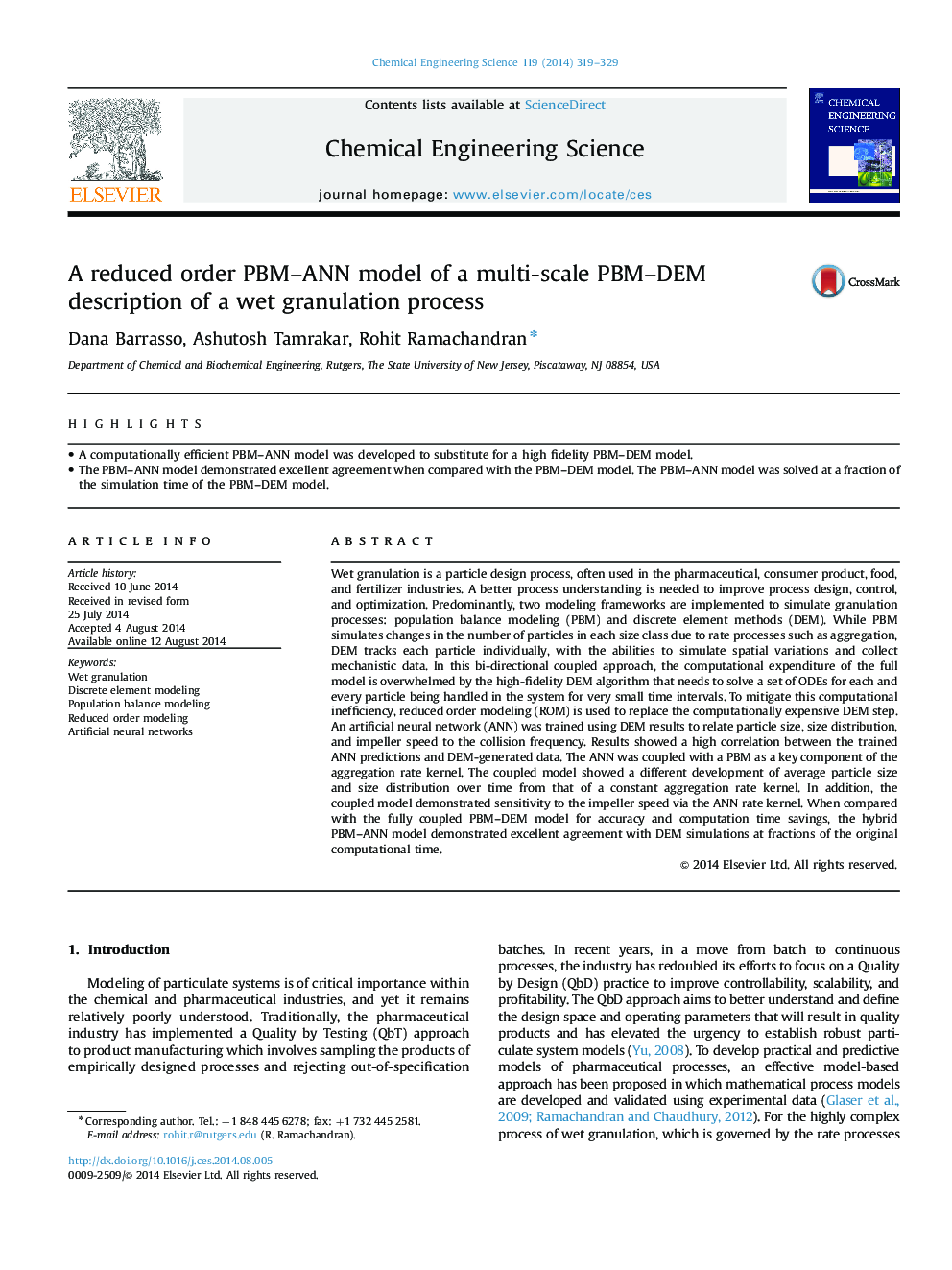| کد مقاله | کد نشریه | سال انتشار | مقاله انگلیسی | نسخه تمام متن |
|---|---|---|---|---|
| 154871 | 456867 | 2014 | 11 صفحه PDF | دانلود رایگان |

• A computationally efficient PBM–ANN model was developed to substitute for a high fidelity PBM–DEM model.
• The PBM–ANN model demonstrated excellent agreement when compared with the PBM–DEM model. The PBM–ANN model was solved at a fraction of the simulation time of the PBM–DEM model.
Wet granulation is a particle design process, often used in the pharmaceutical, consumer product, food, and fertilizer industries. A better process understanding is needed to improve process design, control, and optimization. Predominantly, two modeling frameworks are implemented to simulate granulation processes: population balance modeling (PBM) and discrete element methods (DEM). While PBM simulates changes in the number of particles in each size class due to rate processes such as aggregation, DEM tracks each particle individually, with the abilities to simulate spatial variations and collect mechanistic data. In this bi-directional coupled approach, the computational expenditure of the full model is overwhelmed by the high-fidelity DEM algorithm that needs to solve a set of ODEs for each and every particle being handled in the system for very small time intervals. To mitigate this computational inefficiency, reduced order modeling (ROM) is used to replace the computationally expensive DEM step. An artificial neural network (ANN) was trained using DEM results to relate particle size, size distribution, and impeller speed to the collision frequency. Results showed a high correlation between the trained ANN predictions and DEM-generated data. The ANN was coupled with a PBM as a key component of the aggregation rate kernel. The coupled model showed a different development of average particle size and size distribution over time from that of a constant aggregation rate kernel. In addition, the coupled model demonstrated sensitivity to the impeller speed via the ANN rate kernel. When compared with the fully coupled PBM–DEM model for accuracy and computation time savings, the hybrid PBM–ANN model demonstrated excellent agreement with DEM simulations at fractions of the original computational time.
Journal: Chemical Engineering Science - Volume 119, 8 November 2014, Pages 319–329